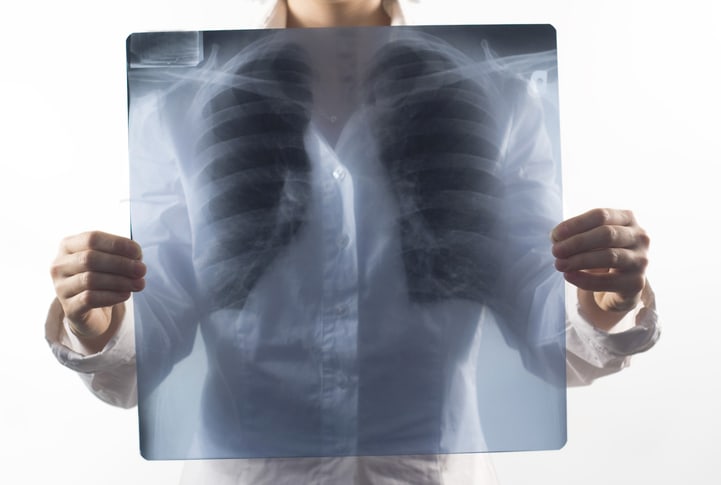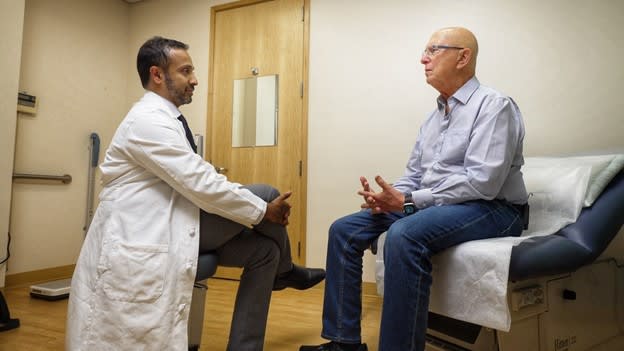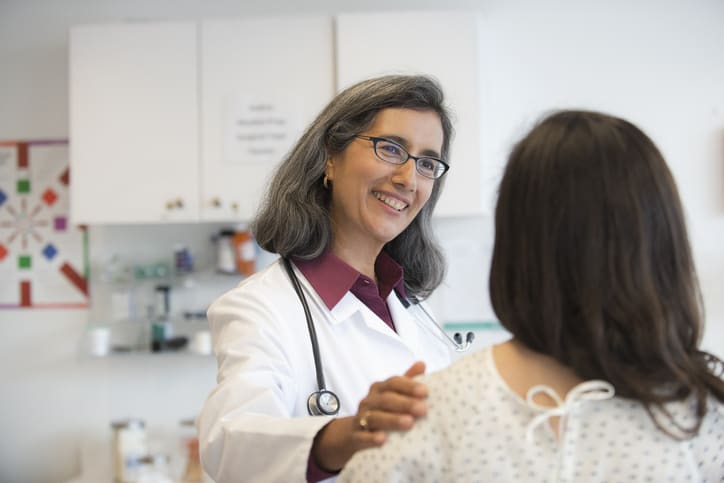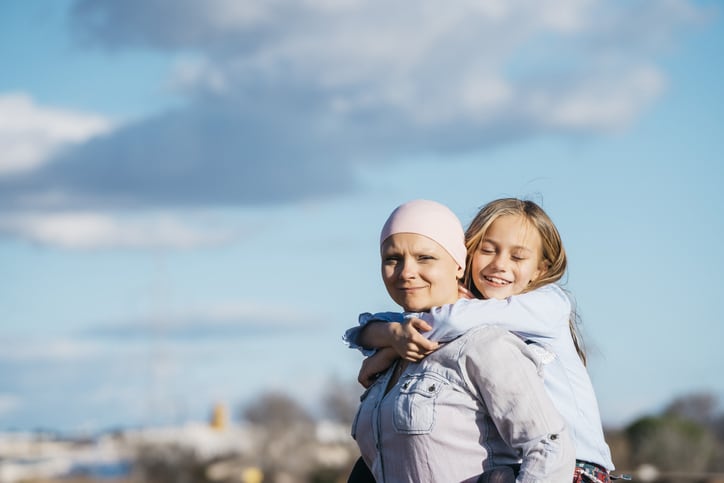Regular lung cancer screenings could save your life

[5 min read]
In this article:
- Regular lung cancer screenings are imperative for former smokers.
- Among those with a history of heavy tobaco use, regular screenings have been found to reduce lung cancer deaths by 20%.
- Talking with a loved one about screenings can be challenging, but empathy and education can make this important conversation easier.
- Learn more about our screening and smoking cessation program from a Providence Swedish lung cancer expert.
Lung cancer remains one of the leading causes of cancer-related deaths worldwide. For individuals with a history of tobacco use, the risk is significantly higher. Early detection through regular lung cancer screenings is crucial in saving and prolonging lives. Despite this, many people are unaware of the importance of these screenings. Many communities also face life-threatening barriers to access, which Providence Swedish is committed to reducing.
The Providence Swedish Cancer Institute (PSCI) is home to some of the nation’s foremost lung cancer experts, including researchers, surgeons and other clinicians. Also available at PSCI is an extensive lung cancer screening and smoking cessation programs. To learn more, we spoke with Emily Grob, DNP, ARNP, who leads both programs at PSCI.
The life-saving potential of lung cancer screenings
Lung cancer screenings, particularly through low-dose computed tomography (LDCT), have been shown to significantly reduce mortality rates. The National Lung Screening Trial found that LDCT screenings can decrease lung cancer deaths by up to 20% among high-risk groups, such as those with a history of heavy tobacco use. The American Cancer Society also estimates that if all high-risk individuals underwent regular screenings, thousands of lives could be saved or extended each year.
“Screening criteria was updated in 2021 so that more eligible individuals, especially minorities and female patients, are eligible to screen. If you have been a smoker, you're between the ages of 50 and 80 and you either still smoke or you quit in the last 15 years, and you have a pack-a-day history of about 20 years, you’re eligible for screening,” says Grob.
Screening: never too early and not just once
Even if they’re eligible, a lot of people think that they shouldn't screen if they feel OK. Grob says this is exactly when former smokers should be screening.
“We're really looking for those early-stage lung nodules that don’t yet have symptoms,” she says. “If we can catch those lung cancers when they're in those early stages versus the distant or the metastasized stage survival rates are eight times better.”
“I tell people that once we have the results, we can take action. The earlier we know about something, the better the outcomes will be.” - Emily Grob, DNP, ARNP
“The other thing we want to stress is that screening is not just a one-time thing. Lung cancer screening is this ongoing thing that we really recommend people do once a year. Unfortunately, a lot of people don't know they're eligible, and national rates are pretty terrible. In Washington State only 4.5% of people who are eligible get screened, even though most insurance plans pay for it,” she adds.
The importance for screenings for women and marginalized populations
Lung cancer is increasingly affecting women, and the number of diagnoses among women who have never smoked is on the rise. Research indicates that women are more likely to develop lung cancer at a younger age and with less tobacco exposure compared to men. Therefore, encouraging lung cancer screenings among women, even those with a relatively short history of tobacco use, is essential.
Marginalized populations, including racial and ethnic minorities and those from lower socioeconomic backgrounds, face higher risks of lung cancer and often experience barriers to healthcare access. These communities may encounter disparities in early detection and treatment, leading to poorer outcomes. Promoting lung cancer screenings within these groups is crucial to addressing health inequities and improving survival rates.
Challenges in participation
A primary obstacle is the lack of awareness about the availability and importance of screenings. Many individuals, especially those who quit smoking years ago, may not realize they still qualify for screenings. Addressing these challenges requires concerted efforts to raise awareness, reduce stigma, and improve access to affordable and convenient screenings.
“Dr. Jed Gordon, our interventional pulmonologist, is leading some exciting research coming out of the Providence Swedish Lung Cancer Research Institute looking at access,” Grob notes. “He’s really been working on pinpointing what is going on with access for Native Americans, and looking at effective ways to expand access. It’s something that he’s really passionate about.”
Talk to your loved ones about screenings
Discussing lung cancer screenings with loved ones can be a sensitive but necessary conversation. Here are some tips for approaching the topic:
- Educate yourself. Before initiating the discussion, familiarize yourself with the facts about lung cancer risks and the benefits of screenings. This will help you provide accurate information and answer any questions.
- Express concern and support. Frame the discussion with empathy and care. Let your loved one know that you are concerned about their health and well-being and that screenings are a proactive step towards early detection and better outcomes.
- Offer to assist. Offer to help your loved one schedule an appointment, accompany them to the screening, or provide support in any other way. This can alleviate some of the anxiety and logistical challenges they may face.
Take the first step
Grob stresses that lung cancer is not a death sentence and that screenings are an invaluable tool in life-saving diagnosis and treatment.
“I always just try to encourage patients to start with making the screening appointment. People are often afraid of the unknown, but I think it’s a much harder thing just to be waiting and waiting for years [to be diagnosed with lung cancer], not knowing and worrying,” she says. “That is a much heavier thing to live with.”
“I tell people that once we have the results, we can take action. The earlier we know about something, the better the outcomes will be and, if necessary, we have so many ways of addressing lung cancer and treating lung cancer,” she says. “So, I encourage people who are eligible to take this next step because it is one of the most proactive things you can do for your health. It's going to make the biggest difference for your longevity and the quality of your life.”
Learn more and find a physician or advanced practice clinician (APC)
Our lung cancer experts at the Providence Swedish Cancer Institute can help you find the right diagnostics and treatments. We don't just treat your lung cancer; we treat you. To speak with someone or make an appointment, call 1-855-XCANCER.
Whether you require an in-person visit or want to consult a doctor virtually, you have options. Contact Swedish Primary Care to schedule an appointment with a primary care provider. You can also connect virtually with your provider to review your symptoms, provide instruction and follow up as needed. And with Swedish ExpressCare Virtual, you can receive treatment in minutes for common conditions such as colds, flu, urinary tract infections and more. You can use our provider directory to find a specialist or primary care physician near you.
Information for patients and visitors
Additional resources
Small cell and non-small cell lung cancer: What you should know.
Lung cancer: Early detection is critical to successful treatment
New study: Lung cancer rates rising faster in younger women. What should you know?
This information is not intended as a substitute for professional medical care. Always follow your health care professional's instructions.
Providence Swedish experts in the media
Follow us on Facebook, Instagram and X.


